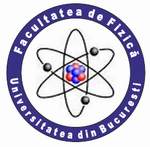| |
 |
UNIVERSITY OF BUCHAREST
FACULTY OF PHYSICS Guest
2025-10-05 22:27 |
 |
|
|
|
Conference: Bucharest University Faculty of Physics 2025 Meeting
Section: Nuclear and Elementary Particles Physics
Title:
QCD processes at low energy scales and at the scale of Z0 boson resonance energy in proton-proton collisions at 13 TeV
Authors:
Roxana Maria MOCANU (1,2), Alexandru JIPA (1), Florin MACIUC (2)
*
Affiliation:
1) University of Bucharest, Faculty of Physics, Bucharest-Măgurele, P.O. Box MG 11, 077125, Romania
2) Department of Elementary Particle Physics, "Horia Hulubei" National Institute for R&D in Physics and Nuclear Engineering (IFIN-HH)
E-mail
roxana.mocanu@nipne.ro
Keywords:
event generators, Drell–Yan, underlying event
Abstract:
This study focuses on the analysis of the Drell–Yan process and the associated underlying event (UE) in proton–proton (pp) collisions at center-of-mass energies √s = 13 TeV, using simulated data generated with the Monte Carlo event generator PYTHIA. The analysis is performed for both LHCb and CMS detector acceptances.
The underlying event refers to all processes in an LHC proton-proton collision which are not directly correlated to the primary hard scattering process. The latter is in this case, the production of a Z0/γ* boson through the Drell–Yan mechanism and any associated parton fragmentation followed by particle jets. The underlying event includes typically contributions from initial and final state radiation, multiple parton interactions (MPI), and remnants of the colliding protons. Understanding the underlying events is essential for correctly identifying signals of potential New Physics and for performing precise measurements of Standard Model processes at hadron colliders.
In this work, we compare the UE in two types of events, namely: (1) minimum bias (MB) events, which are considered typically representative for the underlying events, in case these have low and intermediate energy scales in the hard parton collision – these MB events sample inclusively any generic inelastic collisions (Drell-Yan processes with large boson mass are improbable in these events); (2) events containing a reconstructed Z0/γ* boson from the Drell–Yan process. Exclusion criteria are applied in final state particle phase-space, which remove particles close to the Z0 boson phase space and in opposite direction (DY-associated jet phase space). The goal is to assess whether these selections effectively isolate the underlying event in Z^0 events or whether they introduce biases in the measurement of a “true” underlying event due to, e.g., residual jet contributions or other possible QCD effects.
This topic has been addressed, for example, in two prior publications, by the CMS [1] and ALICE [2] collaborations, with differing methodologies and results. However, no such dedicated study exists for LHCb, making this analysis a relevant study to the understanding of the UE using Z0 boson forward production at rapidity range from 2 to 5.
References:
[1]. A. M. Sirunyan, et al, (CMS Collaboration), Measurement of the underlying event activity in inclusive Z boson production in proton-proton collisions at √s= 13 TeV, JHEP 07 (2018) 032
[2]. ALICE collaboration, Underlying Event properties in pp collisions at √s= 13 TeV, JHEP 04 (2020) 192
|
|
|
|

